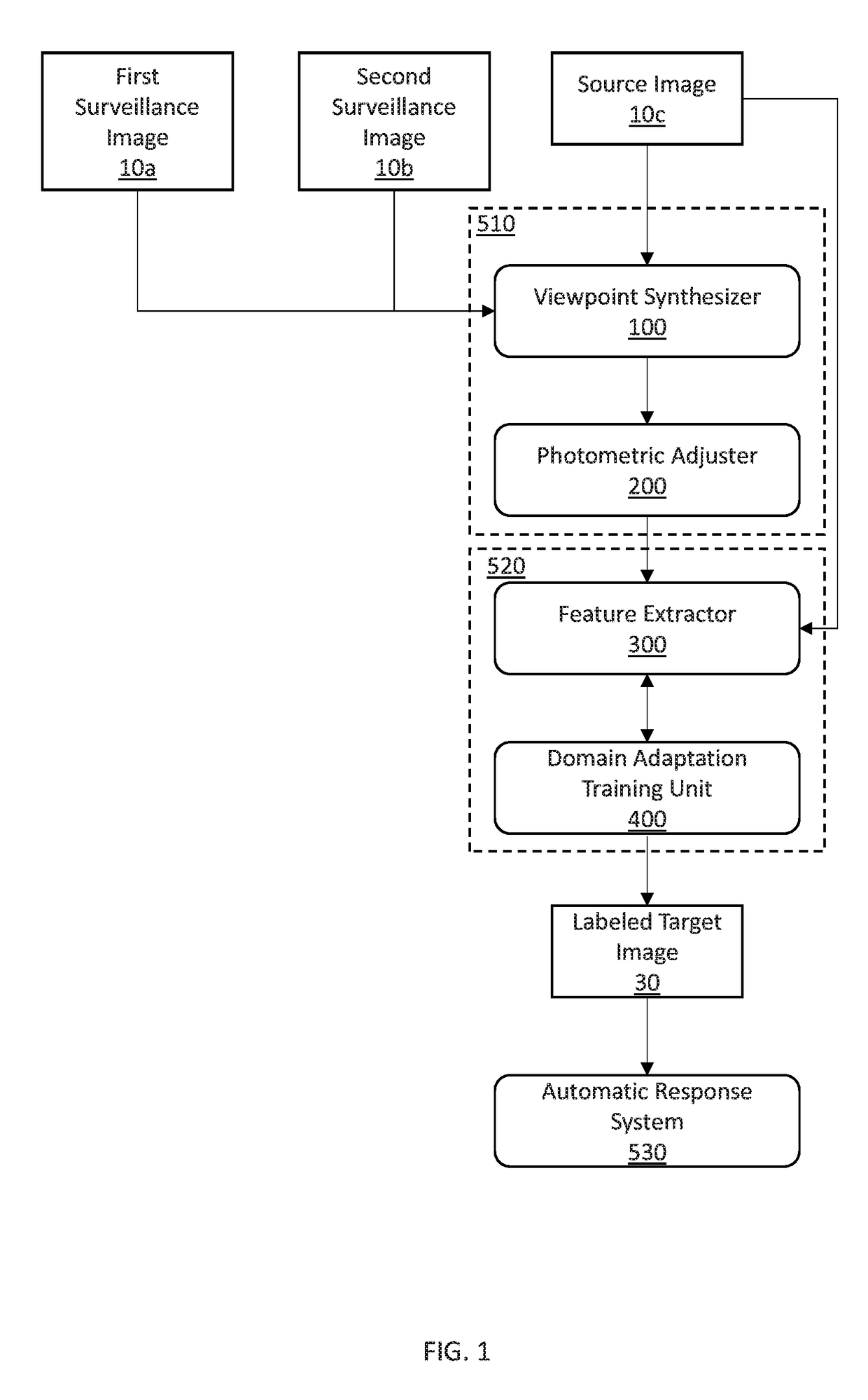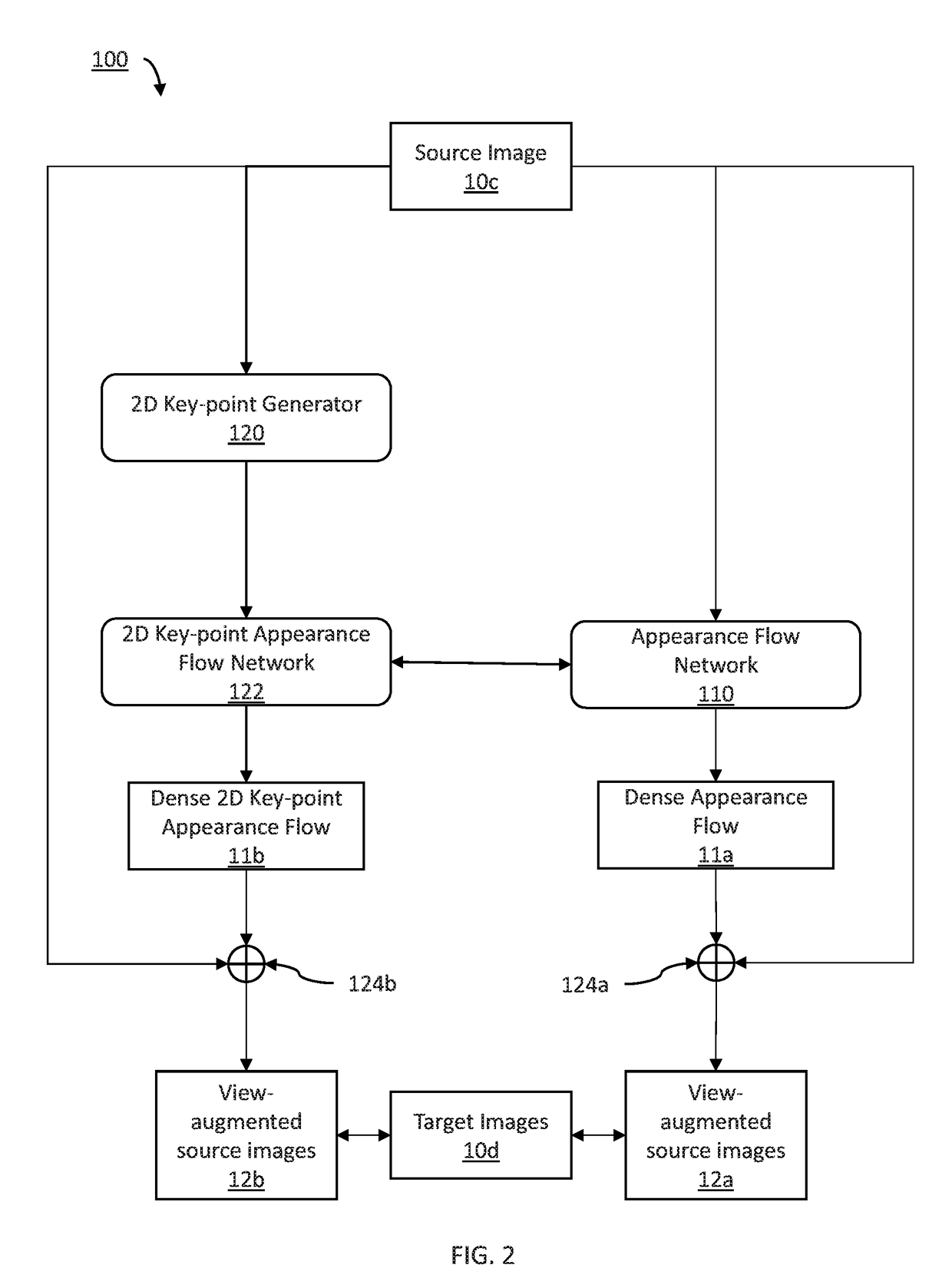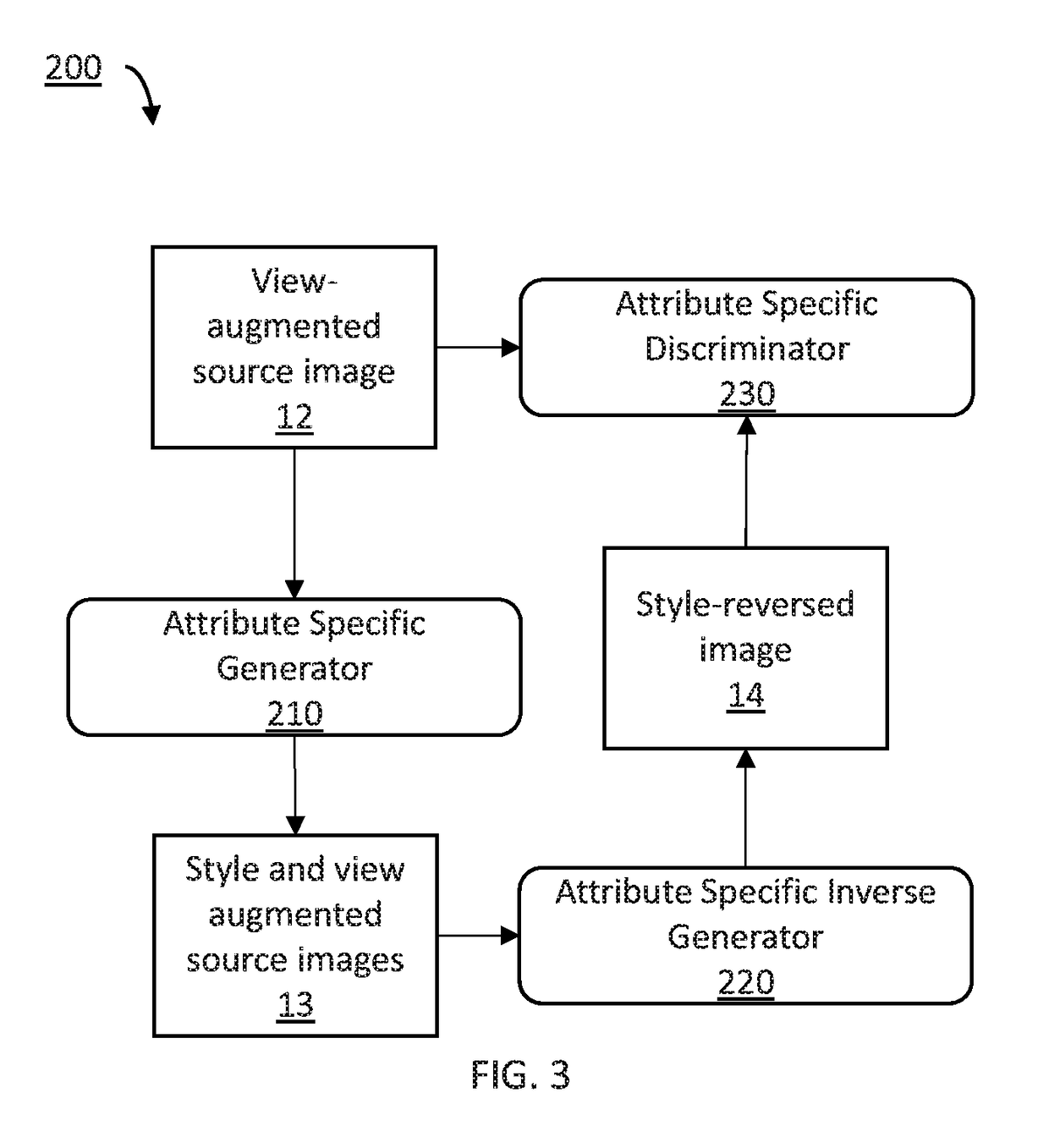Viewpoint invariant object recognition by synthesization and domain adaptation
a domain adaptation and object recognition technology, applied in the field of object recognition, can solve the problems of affecting the development of computer vision tools, and affecting the quality of object recognition training data,
- Summary
- Abstract
- Description
- Claims
- Application Information
AI Technical Summary
Benefits of technology
Problems solved by technology
Method used
Image
Examples
Embodiment Construction
[0015]In accordance with the present principles, systems and methods are provided for viewpoint invariant object recognition by synthesization and domain adaptation.
[0016]In one embodiment, feature-space and pixel-space domain adaptations are implemented using semi-supervised learning of a domain adaptation model using unsupervised viewpoint synthesization. The domain adaptation can include training leveraging web images of objects to improve training of a generative adversarial network. Using a connection between domain adaptation and semi-supervised learning, a domain-adversarial neural network can be utilized that can more efficiently and more accurately train a neural network for object recognition with a relatively sparse set of training images, such as the web images.
[0017]According to aspects of the present invention, domain-adversarial training can be used for the domain adaptation neural network to accomplish feature-space domain adaptations. The domain-adversarial objectiv...
PUM
 Login to View More
Login to View More Abstract
Description
Claims
Application Information
 Login to View More
Login to View More - R&D
- Intellectual Property
- Life Sciences
- Materials
- Tech Scout
- Unparalleled Data Quality
- Higher Quality Content
- 60% Fewer Hallucinations
Browse by: Latest US Patents, China's latest patents, Technical Efficacy Thesaurus, Application Domain, Technology Topic, Popular Technical Reports.
© 2025 PatSnap. All rights reserved.Legal|Privacy policy|Modern Slavery Act Transparency Statement|Sitemap|About US| Contact US: help@patsnap.com



